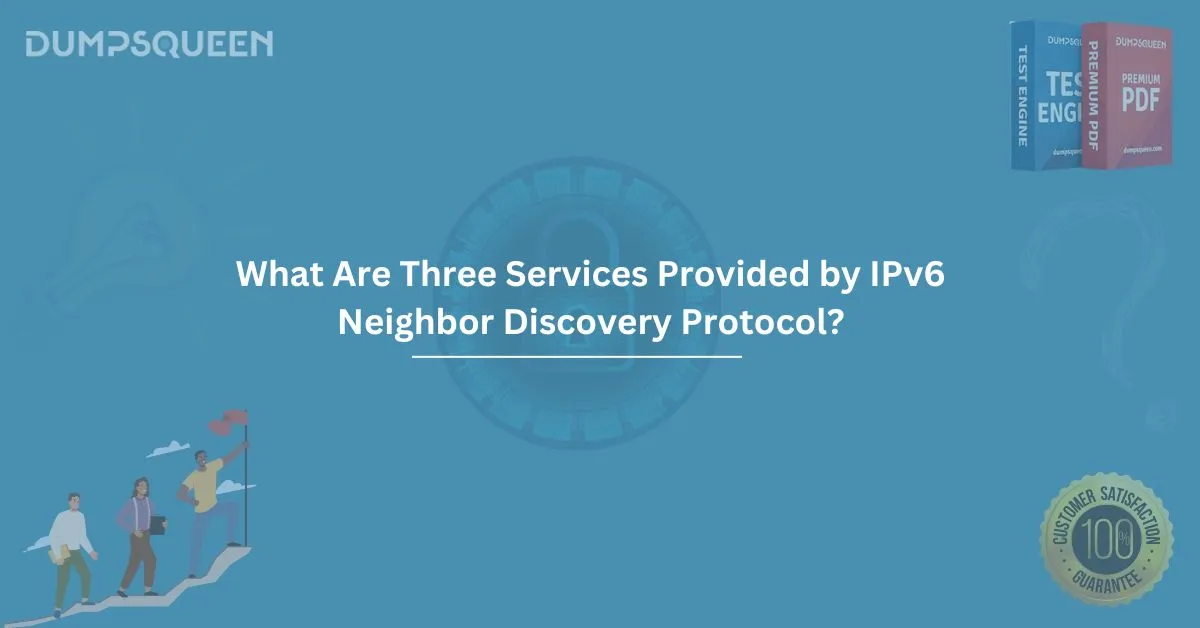Introduction
The IPv6 Neighbor Discovery Protocol (NDP) is a fundamental component in the functioning of IPv6 networks. It provides essential services that allow devices on an IPv6 network to communicate efficiently and without errors. These services ensure that devices can discover other devices on the network, determine the reachability of those devices, and configure their network interfaces correctly. In this blog, we will explore the three main services provided by the IPv6 Neighbor Discovery Protocol (NDP).
Before diving into the details of these services, let’s first take a quick look at what IPv6 NDP is and how it works.
What is IPv6 Neighbor Discovery Protocol (NDP)?
IPv6 NDP is a protocol used by IPv6 devices to discover and communicate with neighboring devices on a local network. NDP operates within the link-local scope and is an essential protocol for devices to interact in an IPv6 network. NDP performs a variety of tasks related to address autoconfiguration, neighbor discovery, router discovery, and path MTU discovery, among other things.
The protocol leverages several message types, including:
- Router Solicitation (RS)
- Router Advertisement (RA)
- Neighbor Solicitation (NS)
- Neighbor Advertisement (NA)
- Redirect Message
With these messages, NDP facilitates the discovery of other devices, ensuring smooth communication on IPv6 networks.
Three Key Services Provided by IPv6 Neighbor Discovery Protocol
Neighbor Discovery
One of the primary services of IPv6 NDP is the ability to discover other devices on the same local network segment. This service is vital for any IPv6-enabled device, as it needs to identify neighboring devices to establish communication.
The Neighbor Discovery process involves devices sending a Neighbor Solicitation (NS) message to a multicast address. The neighboring device then responds with a Neighbor Advertisement (NA), indicating its presence on the network. This ensures that devices on the same network segment can communicate without the need for manual configuration of every individual device on the network.
Address Autoconfiguration
Another key service provided by NDP is the Address Autoconfiguration feature, which is fundamental in simplifying network management. With this service, devices can automatically configure their IPv6 address based on the network they are connected to. This is made possible through the use of Router Advertisements (RA).
When a device joins an IPv6 network, it listens for Router Advertisement messages from routers. These messages contain the prefix of the network and other configuration details. Using this information, the device can generate its own IPv6 address. This process is also referred to as Stateless Address Autoconfiguration (SLAAC).
Address Autoconfiguration eliminates the need for manual IP address assignment or reliance on DHCPv6 for address configuration, making it easier to deploy and scale IPv6 networks.
Duplicate Address Detection (DAD)
Duplicate Address Detection is another critical service provided by NDP. When a device generates an IPv6 address (whether manually or via autoconfiguration), it must ensure that the address is not already in use by another device on the network. This process helps avoid address conflicts, ensuring smooth and reliable communication.
NDP uses Neighbor Solicitation (NS) messages to check if an address is already in use. If a device receives a Neighbor Advertisement (NA) indicating that the address is already in use, it will attempt to generate a new address and repeat the process.
Duplicate Address Detection is essential for maintaining the integrity of the network and preventing potential issues such as IP address conflicts and network disruptions.
Additional Services Provided by IPv6 NDP
While Neighbor Discovery, Address Autoconfiguration, and Duplicate Address Detection are three of the core services, there are other important functions provided by NDP:
- Router Discovery: NDP allows devices to discover routers on the network, ensuring that devices know which devices are responsible for forwarding packets to other networks.
- Path MTU Discovery: NDP helps devices discover the maximum transmission unit (MTU) size for communication, ensuring that packets are not too large for the network's MTU, avoiding fragmentation.
- Redirect Messages: Routers can send Redirect messages to inform devices about better next-hop addresses, ensuring more efficient routing of packets.
Conclusion
IPv6 Neighbor Discovery Protocol (NDP) is an essential component of IPv6 networking that enables devices to discover and communicate with each other seamlessly. The three core services provided by NDP — Neighbor Discovery, Address Autoconfiguration, and Duplicate Address Detection — play a crucial role in the functionality of IPv6 networks. By automating key network configuration tasks, NDP improves the efficiency, scalability, and management of IPv6 networks.
NDP is indispensable in ensuring smooth and efficient IPv6 communication. It eliminates the need for manual intervention in network configuration, allowing devices to function autonomously while avoiding common network issues such as address conflicts.
As IPv6 adoption continues to grow, understanding the role and functionality of NDP becomes increasingly important for IT professionals and network administrators. Whether you're configuring a new network or troubleshooting IPv6 issues, understanding NDP's key services is a vital skill.
Sample Questions and Answers
Question 1:
What is one of the primary services provided by IPv6 Neighbor Discovery Protocol (NDP)?
A) Router Discovery
B) DHCPv4 Configuration
C) Manual Address Assignment
D) IPv4 Address Resolution
Answer:
A) Router Discovery
Question 2:
Which of the following services does IPv6 NDP use to ensure that an address is not already in use on the network?
A) Address Resolution Protocol (ARP)
B) Duplicate Address Detection (DAD)
C) Stateless Address Configuration
D) Neighbor Advertisement (NA)
Answer:
B) Duplicate Address Detection (DAD)
Question 3:
What is the primary function of the Router Solicitation (RS) message in IPv6 NDP?
A) To request an IPv4 address
B) To discover neighboring devices
C) To request router information
D) To advertise a new address
Answer:
C) To request router information
Question 4:
Which service does NDP provide that helps devices automatically configure their IPv6 addresses?
A) Address Resolution
B) Address Autoconfiguration
C) Manual Address Assignment
D) Path MTU Discovery
Answer:
B) Address Autoconfiguration



